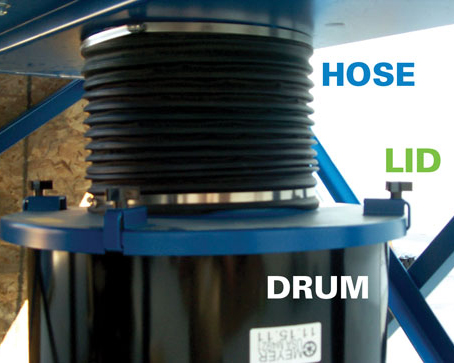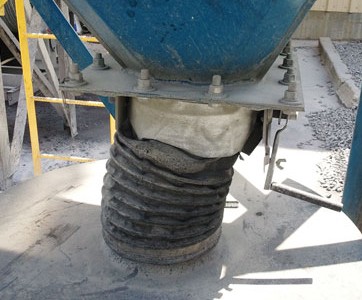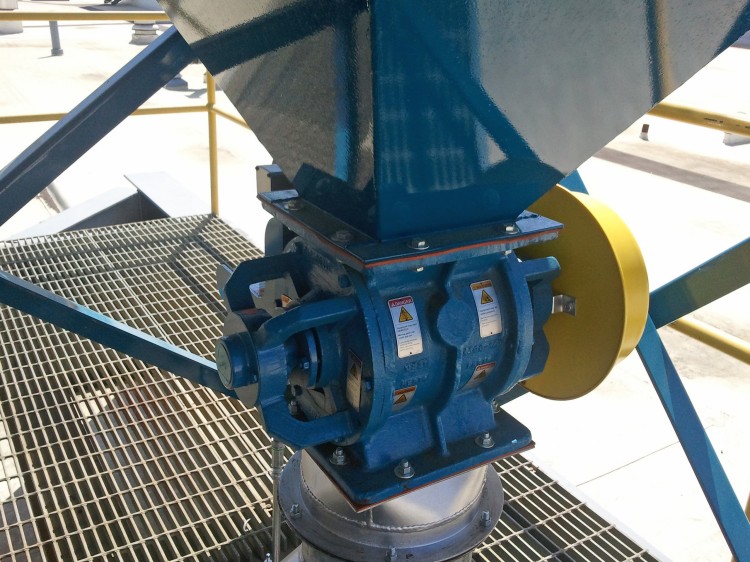Save Money on Filters by Maintaining Dust Collector Discharge Devices
By John Staskiewicz, Donaldson Torit Regional Engineer
One item often overlooked with dust collection systems is discharge devices, with the most common types being the drums or rotary valves. Proper maintenance of an air-tight seal for these devices is critical for keeping excess dust away from the filters during normal operation of the dust collector. If the air seal is not maintained, two things can occur:Outside air can come in from the bottom of the collector. This will take away air from the process dust control. The purpose of an air-tight seal at the discharge device is to allow smaller and lighter density dust to fall and be moved away from the filters. So the second and more important consequence of not maintaining the air seal is that if air is allowed to come into the collector from the bottom, the upward air rushing in will return the lighter dusts back into the collector where it will then be re-deposited back onto the filters. This phenomenon will cause a higher differential pressure and shorten filter life.

Figure 1
Consider a typical 55-gallon drum type discharge arrangement (Figure 1). Usually these drums are connected to the bottom of the dust collector with a flexible hose. For the discharge system to operate efficiently, the integrity of each component should be inspected periodically. Check the hose to see if it is properly connected to the collector and lid (Figure 2). Also check the hose for wear and to see if any holes have developed. Replace as necessary. Check the drum cover to ensure the lid is not bent or the gasket worn or missing. If the lid or gasket is damaged, replace as necessary. Finally, inspect the drum itself since this item is handled most often. Check the drum for its integrity and to be sure it is round and contains no holes. A bent or damaged drum will prevent a good air-tight seal with the lid cover (Figure 3).

Figure 2 - Discharge system with damaged hose

Figure 3 - A damaged drum can negatively impact filter life
The other discharge device to consider is the rotary valve; it should provide a seal that does not allow outside air to enter the dust collector. With flexible rubber wipers in rotary valves, it’s important to inspect the rotor and wipers once a quarter for worn, missing or torn rubber since these imperfections can allow outside air to enter the collector. Damaged wipers should be replaced as necessary. When it comes to machined rotor valves, the rotor-tip-to-housing clearance tolerance must be monitored to ensure the clearance does not exceed the recommended manufacturer’s clearance or excessive air leakage may occur through the valve causing the filters to fail sooner (Figure 4).

Figure 4 - Rotary valve creates a seal between the collector and drum
Those operations that use screw conveyors with a downstream rotary valve discharge also require inspection. With screw conveyors, it is important to have the inspection covers gasketed to maintain air and water tightness. Since the screw conveyors are flat surfaces, rain water can accumulate and be drawn into the conveyor causing material blockage and unnecessary down time. Inspect the screw conveyors routinely and listen for any air “whistling” that may occur. If the gasket is missing or cover plate bent, repair or replace as necessary.
Paying attention to and maintaining a dust collector’s discharge device can pay off in terms of extended filter life and cost savings.
Certifications
Let Dust Collector Services helps with all your NFPA requirements.

